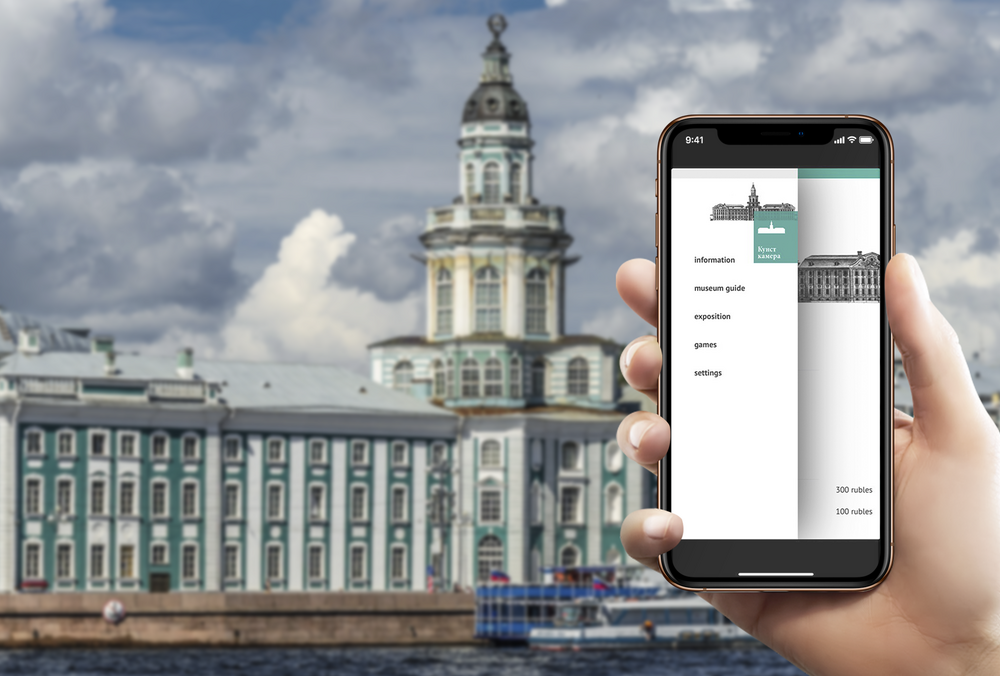Not only advanced manufacturers, retailers, and malls, but also museums embrace new digital technologies to become more interactive and attract the attention of young audiences. In order to meet the needs of modern hi-tech people, who spend the majority of their time online, it is no longer enough to organize another “nice exhibition”, gather some significant artefacts and place them beautifully. Digital people are constantly looking for new experience, they prefer not only seeing, but listening to, touching and interacting with space and art pieces both online and offline.
Many top museums have already used digital technology to become more attractive, entertaining and informative for their visitors. The Rubens House in Holland, which uses iBeacon technology with push notifications, is an example. The Smithsonian has a number of applications with audio and video tours (both inside the Museum and outside), small tests and games for visitors, which also gather analytical information to improve the quality of customer service. Cooper-Hewitt National Design Museum in New York shows users remotely 20% of the exhibits.
Russian museums are also involved in the technological revolution. Peter the Great Museum of Anthropology and Ethnography (Kunstcamera) in Saint Petersburg and Armoury Chamber of Moscow Kremlin created sophisticated mobile apps with indoor navigation function. Both are based on Navigine’s positioning solution.
Online museum guide

The development of indoor navigation system in Kunstkamera was initiated in 2015, the mobile app with similar features for Armoury Chamber was launched in 2017. Both projects were accomplished by our partner, Maugry, an IT-company, specializing in designing mobile applications for museums and art galleries. The main idea in both cases was to create a useful and convenient digital tool which could extend the abilities of existing audio guides and allow museums to go beyond their walls. The final functionality comprises positioning a visitor with down to 1 meter accuracy, suggesting the most appropriate route to particular exhibit and automatic playback of audio information about the closest artefact.
“Our team had to implement indoor navigation in mobile apps created particularly for Moscow Kremlin and Kunstcamera. We made a short list of at least ten different solutions, both Russian and foreign. Eventually we chose Navigine because of sustainability, trustworthiness as well as the accuracy of positioning. Navigine had a ready technology, which was modified and improved to meet the specific requirements within 6 months”, said Andrey Durakov, CEO of Maugry.
A developed solution was based on a clever mix of iBeacon technology and cutting-edge software. Up to 120 BLE beacons were installed throughout the museum space and showcases with exhibits. When a visitor comes to a particular showcase and spends there at least 10-15 seconds, the system automatically plays audio record. So, user obtains an opportunity to get detailed information about all artefacts. This app is integrated inside a common museum database with a lot of text, photos and audio information. Due to this connection, it is easy for all museum staff to download a new data or correct the current one.
Golden iBeacon
The process of BLE-beacons installation usually takes a day. However, museums are an exception. We spent a few months trying to find the most appropriate places for our beacons because of a variety of restrictions. The most important problem was additional equipment, which destroyed the design of exhibition's authors or decreased the visibility of artefacts. As a result, we found the most extraordinary spots for iBeacons, like radiators or plinth. Some beacons were colored in gold in order to be integrated and hidden in the interior.
As we got used to work with malls, retailers, and manufacturers, such specific requirements were quite unusual for us. The process of installation included some iterations, our specialists visited the Kremlin, at least, ten times. It was great that our partner, Maugry, handled all communication with the client and finally combined the needs of both sides. Now both applications, created by Maugry in partnership with our company, work in English and Russian and are available in the AppStore and Google Play.

Digital museum
Indoor navigation system could easily be transferred and implemented in every museum. The main features (visitors' positioning, route suggestions, and automatic audio-information playback) meet the needs of modern museums aimed at attracting a young digital audience. Nowadays indoor navigation system provides many opportunities for commercial reality owners. Such solutions could be used as an interactive map, navigation systems, as well as unusual multifunctional museum guide.
Mobile app with indoor navigation function allows museum to attract new visitors, to become more interactive and educative, to collect useful analytics of visitors' behavior, including heat and flow maps. This data could assist in creating new exhibitions, based on visitors’ attitudes. There is just one illustration, how sophisticated technologies help museums to stay flexible and demanded.




